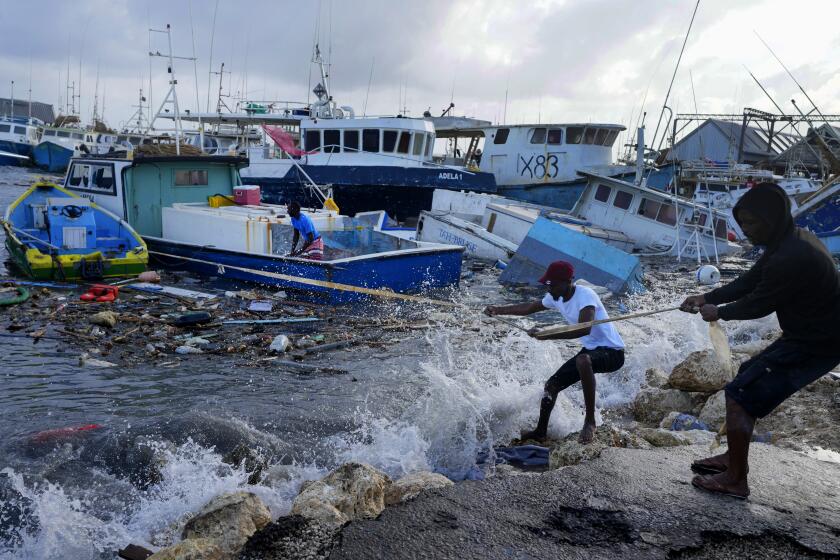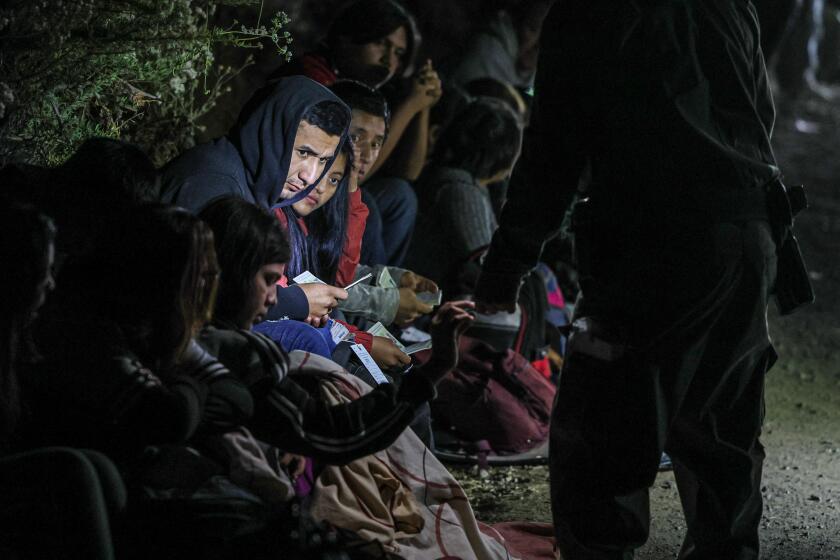REBELLION : Forgiving the Enemy in Manila : President’s efforts to neutralize Philippine rebels give him much-needed boost.
Back in July, 1986, then-Defense Secretary Fidel V. Ramos sentenced 30 soldiers who tried to overthrow the government to 30 pushups each--and then joined them in the punishment.
Ramos is president now, but he’s still a forgiving man. Ask the Philippines’ most famous former fugitive, the charismatic, cashiered army Lt. Col. Gregorio (Gringo) Honasan.
Honasan led the two most serious and bloodiest of the seven botched coup attempts against then-President Corazon Aquino. Although several mutinies had comic opera quality, the revolts Honasan led in August, 1987, and December, 1989, left more than 150 people dead. They terrified tourists and foreign investors and knocked the economy into a tailspin from which it has yet to recover.
Today, Honasan and every one of more than 2,000 colleagues in arms in the Revolutionary Armed Movement, the so-called Ramboys, are free. All rebellion charges have been dismissed or suspended. Many of the participants have resumed active military service.
“We are unique as a revolutionary movement because the government continues to pay the salaries of our major members,” said Honasan, 45.
Nor is Honasan apologetic for the bloodshed and havoc he and his troops caused. “People ask us why we use arms,” he said. “We’re not lawyers. We’re not businessmen. Our area of expertise is management of violence.”
Honasan was the nation’s most wanted man after he escaped from a prison ship in April, 1988, by persuading his guards to flee with him. Despite a $200,000 price on his head, he avoided capture for almost five years, resurfacing last Christmas with flecks of gray in his long hair and a safe-conduct pass from the government to begin what both sides call a “peace process.”
Honasan says he has “temporarily” renounced armed force to give peace talks a chance. His five “talking points” for peace are ambitious, if vague. They are good government, plus electoral, economic, social and military reforms. He warns he will go back underground if no progress is made.
“We have leverage,” he added darkly. “They would not be talking to us if we did not pose some kind of threat.”
Honasan insists the peace process “is more important than elections.” Still, reports of him attending wreathlayings, speeches and society dinners have fueled suspicion that he is campaigning for a Senate seat in 1995.
Honasan credits Haydee Yorac for persuading him to come in “from the cold.” Yorac, a wily and much-respected lawyer, chairs the National Unification Commission, created last year to formulate an amnesty program for the government’s militant opponents.
She is now trying to broker peace deals with Muslim secessionist groups on the southern island of Mindanao and with Communist insurgents who have battled Manila for 24 years. More than 200 leftist activists, commandos and convicted assassins have now been released from prison under what Yorac called “confidence-building measures to convince people to come to the negotiating table.”
The country’s Communists are badly divided, however, with the party founder and nominal leader, Jose Maria Sison, living in the Netherlands and various troop commands operating independently around the Philippines. Although the 13,000-strong New People’s Army still controls up to 20% of the country, many commands are now little more than bandit groups.
“Part of the problem is they are racked by internal dissension and a leadership crisis,” Yorac said. “So we’re trying to figure out if we’re dealing with one group or two groups or even more.”
Critics say a culture that places such a heavy value on forgiveness and avoids punishment encourages more problems.
But the move to neutralize the armies of the left and right, even by granting pardons, has been a much-needed boost for Ramos. When he took office last June, he pledged to restore political stability to the coup-weary nation.
It’s one promise he’s been able to keep.
Two Sides Giving Peace a Chance
Some recent Philippine revolts and coup attempts:
July, 1986--Takeover of the Manila Hotel by loyalists of then-President Ferdinand Marcos for 37 hours.
January, 1987--Attack on Manila military camps and a television station, timed to disrupt voting for a new constitution.
April, 1987--”Black Saturday” mutiny by enlisted men and Marcos loyalists at Ft. Bonifacio, the main army camp.
July, 1987--Attempted takeover of airport and Villamor Air Base by Marcos loyalist troops.
August, 1987--Rebels led by former Lt. Col. Gregorio (Gringo) Honasan seize military headquarters. Fifty people are killed.
December, 1989--Coup involving 1,500 rebel soldiers combines Marcos loyalists and Honasan’s followers. More than 100 people die.
October, 1990--Revolt by Col. Alexander Noble and 200 soldiers on Mindanao. They seized three military camps before surrendering.
More to Read
Start your day right
Sign up for Essential California for news, features and recommendations from the L.A. Times and beyond in your inbox six days a week.
You may occasionally receive promotional content from the Los Angeles Times.







